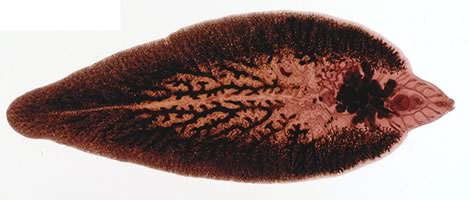Protecting cattle against fluke at housing rather than delaying treatment will yield a financial return by reducing stress and improving growth rates, according to a recent study.
A trial by FAI Farms in Oxfordshire compared the effectiveness of parasite treatments in 36 first season grazing animals. The treatments were; a fluke and worm pour-on (CYDECTIN® TriclaMox®) given at housing; a worm pour-on (CYDECTIN®) given after housing; and no treatment.
Results
The stress of housing and weaning led to an 89% drop in growth rates across all groups. Cattle handled post housing also have the potential for a second growth rate dip of 20% as a result of being handled twice.
During the 4-8 weeks post-housing:
- Animals treated at housing with a combined worm and fluke treatment (CYDECTIN TriclaMox) gained an average of 16.1kg
- Cattle treated after housing using with a worm pour on (CYDECTIN) gained 13.4kg
- Cattle offered no worm or fluke treatment at housing gained 8.6kg.
Benefits
Treating cattle for fluke at housing has been shown to derive benefits for farmers and cattle.
Georgina Cox from FAI Farms said: “It is advisable for farmers to treat cattle at housing. From an animal management point of view, it reduces the need for further handling of animals later on and is easy to do once you are already handling them.”
From a productivity perspective, animals that were treated at housing with a combination worm and fluke product weighed almost 3kgs more at 4-8 weeks after housing compared to those treated after housing using a single-active wormer. This extra growth equates to £16.52 a head compared to £10.63 in cattle treated after housing.
In addition, cattle challenged by fluke, but not receiving treatment until 4-8 weeks post-housing will lose production because of subclinical disease. Although the copro-antigen tests didn’t show a fluke burden at the start of the trial, the results suggest there may have been an underlying fluke issue. This contributed to the increase in growth rates in those treated with a combined product at housing.
Zoetis vet Dr Dave Armstrong explained: “Because of the volume of faeces in cattle there is a dilution effect meaning the test is not as sensitive in cattle as it is in sheep. By using a combination fluke and worm product, the cattle saw a complete reduction in the worms and the extra growth rate during the 4-8 weeks after housing indicates there was some fluke burden.”
Advice
Treating at housing using a combined worm and fluke product cleans out parasites including fluke thereby supporting a healthier transition period, said Dr. Armstrong.
“A cow’s liver is bigger, meaning they can tolerate a greater fluke burden, you won’t see sudden deaths like you would in sheep. However, you will see subclinical disease, which can be costly” he said.
Fluke infected cattle can take 80 days longer to reach slaughter weight costing between £25-35 a head, according to the Agriculture and Horticulture Development Board (AHDB) figures.
CYDECTIN TriclaMox is the only combination fluke and worm product to provide both a persistent wormer and a flukicide that treats all stages of fluke, early immature, late immature and adults. Treating cattle at housing rather than delaying treatment has been found to improve growth rates compared to animals receiving delayed treatment or no treatment at all.




